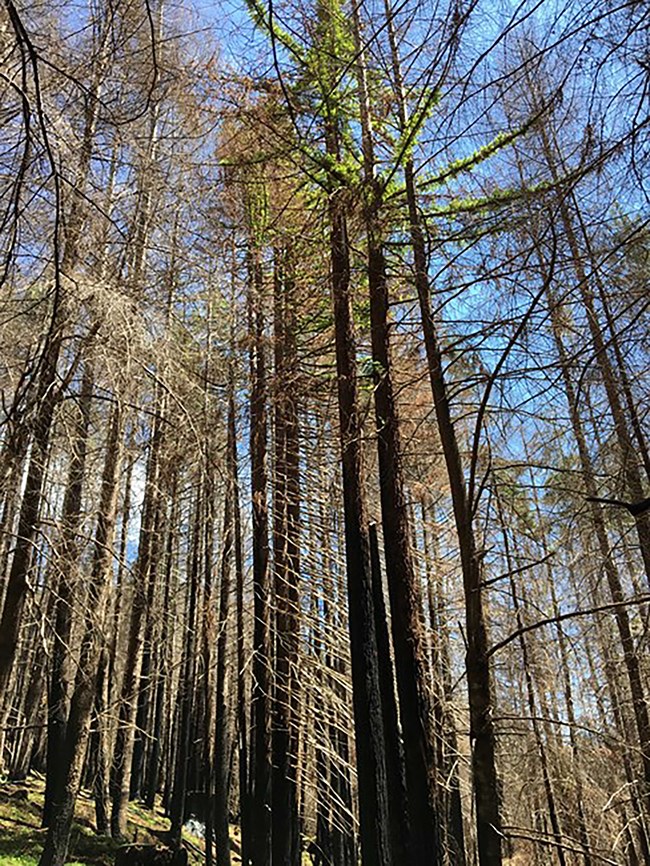|
During And After a Prescribed Fire 

Left image
Right image
Managing Fire for a Healthier ForestFire plays a vital role in maintaining the health of Redwood National and State Parks. Through carefully planned prescribed fires, park staff work to reduce hazardous fuels, restore native ecosystems, and promote the long-term resilience of these ancient forests. Prescribed Fire VideosWatch our videos to see how, where, and why prescribed fires are conducted. Learn how this essential tool helps protect the towering redwoods, support biodiversity, and reduce the risk of uncontrolled wildfires. 
NPS / Photo: S Kraus Living with Fire – Since Time ImmemorialAs you explore Redwood National and State Parks, you may notice that many ancient redwood trees bear the scars of fire. Some have been hollowed out, forming what are known as "Chimney Trees," yet they remain very much alive. This resilience shows that fire has been a natural part of old-growth redwood forests for thousands of years. The thick bark of redwoods allows them to withstand low-intensity fires, which have historically played a role in shaping these forests. Fire’s Historic Role in Redwood ForestsFire has occurred at different intervals depending on location—some areas of old-growth redwoods burned every few decades, while others remained untouched for centuries.
This traditional use of fire around the redwoods ended abruptly in the mid-1800s when Euro-Americans settlers arrived in great numbers in this part of California. This new management practice of removing fire caused a century of fire suppression in habitats that evolved with fire. The outcome is altered landscapes and ecosystems across the area: and an increased risk of catastrophic fires. Modern Fire Management and RestorationToday, fire ecology is a well-established science that examines the role and impact of fire in an ecosystem. Beginning in the 1950s, national parks such as Everglades and Sequoia-Kings Canyon reintroduced prescribed fire to maintain habitat and landscape health. At Redwood National and State Parks, prescribed fire has been part of the restoration toolkit since the early 1980s. Fire is selectively used to restore diverse parklands—including prairies, grasslands, and certain forests—to healthier conditions. Additionally, nearly 70,000 acres of second-growth forests are now overcrowded with Douglas-fir and other species. Without intervention, these once-logged forests will remain dense and unhealthy, limiting wildlife habitat and preventing young redwoods from growing tall and strong. In these cases, prescribed fire is a key tool in ongoing ecosystem restoration programs. Learn MoreRead more about the 2019 prescribed fire season at Redwood National and State Parks. 
NPS Prescribed Fire Management GoalsPrescribed fire is a vital tool in maintaining the health of prairies, oak woodlands, and old-growth forests at Redwood National and State Parks. By using controlled burns on a regular basis, park managers aim to restore natural processes, manage invasive species, and promote ecosystem resilience. You can download photos (Flickr) or watch videos of prescribed fire operations in action. Objectives for Prairies and Oak Woodlands:
Objectives for Old-Growth Forests:
|
Last updated: February 4, 2025
